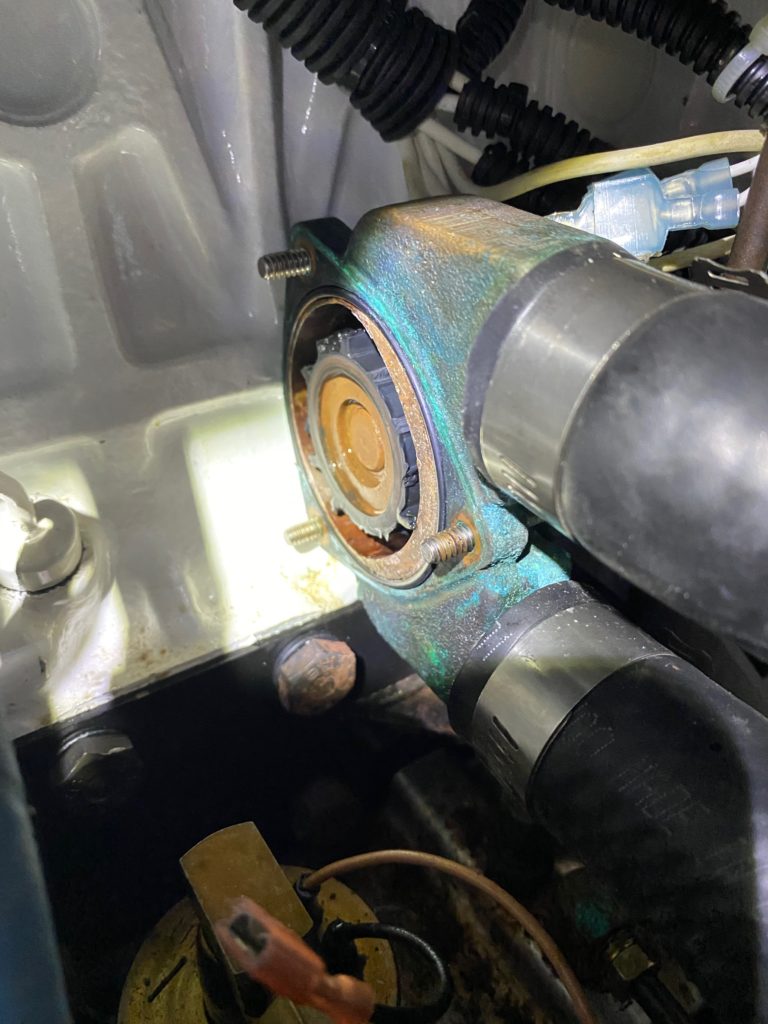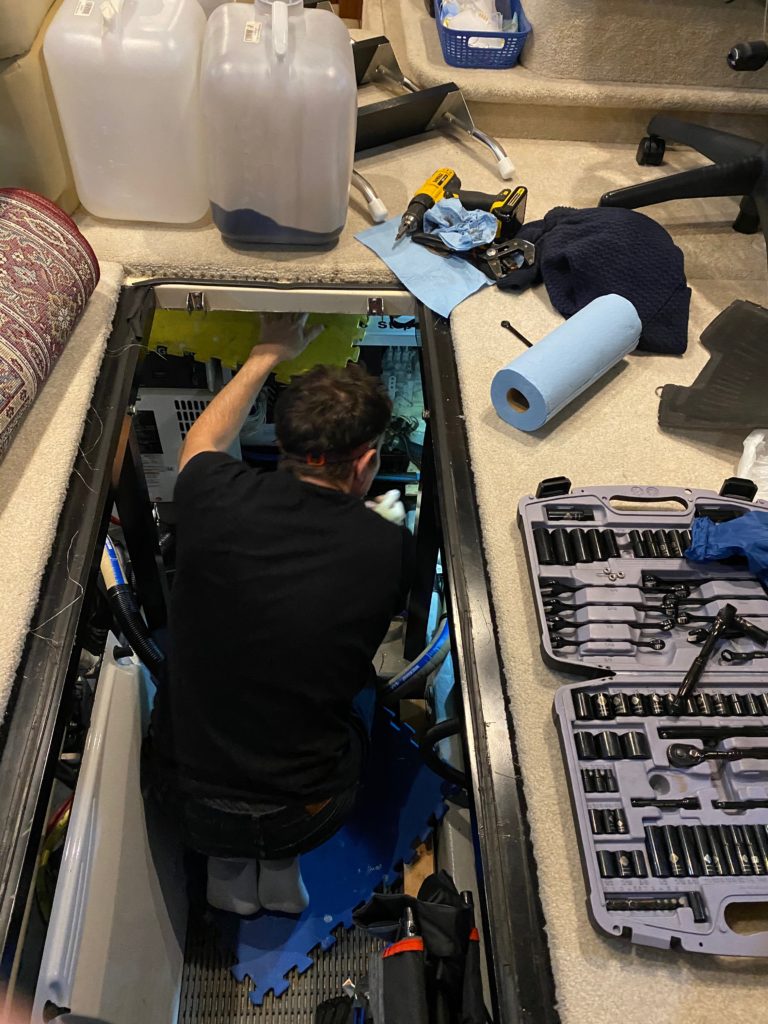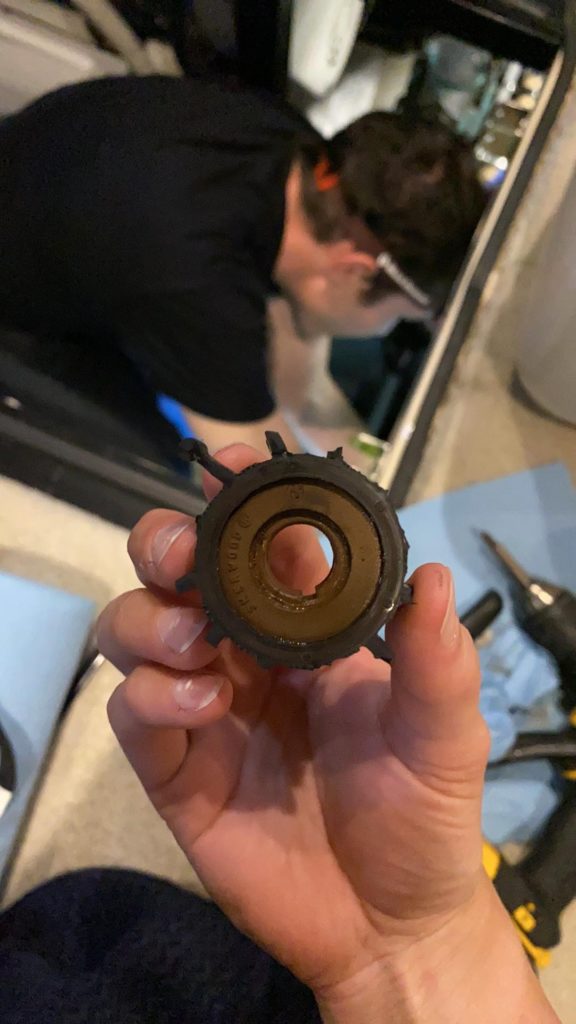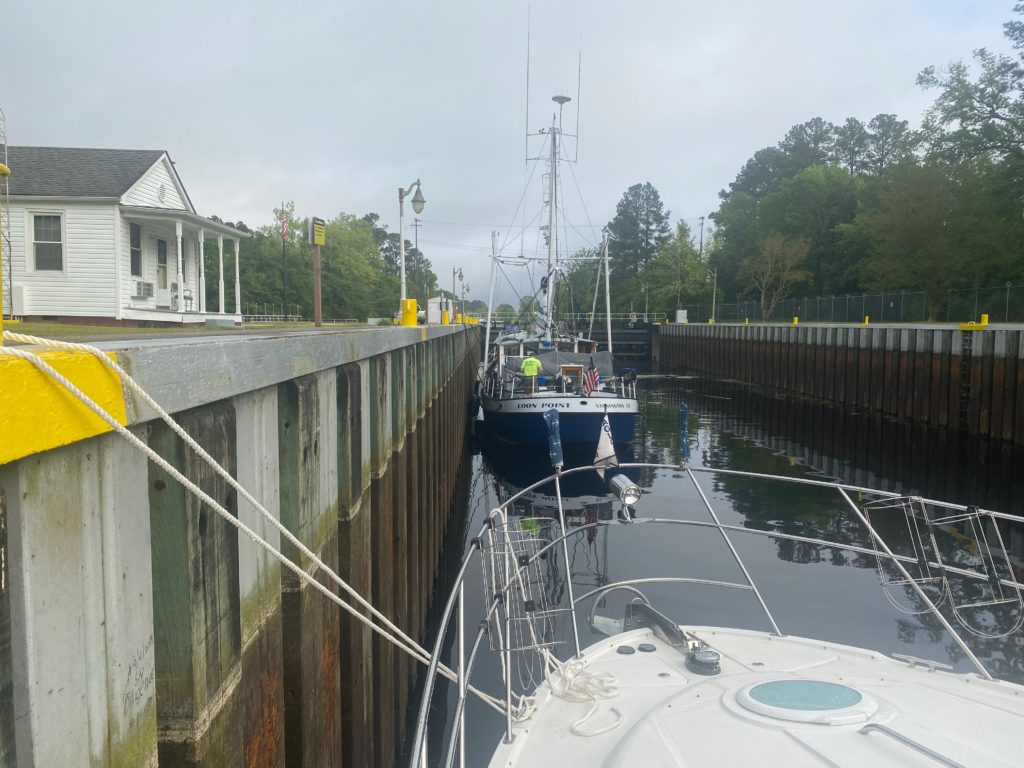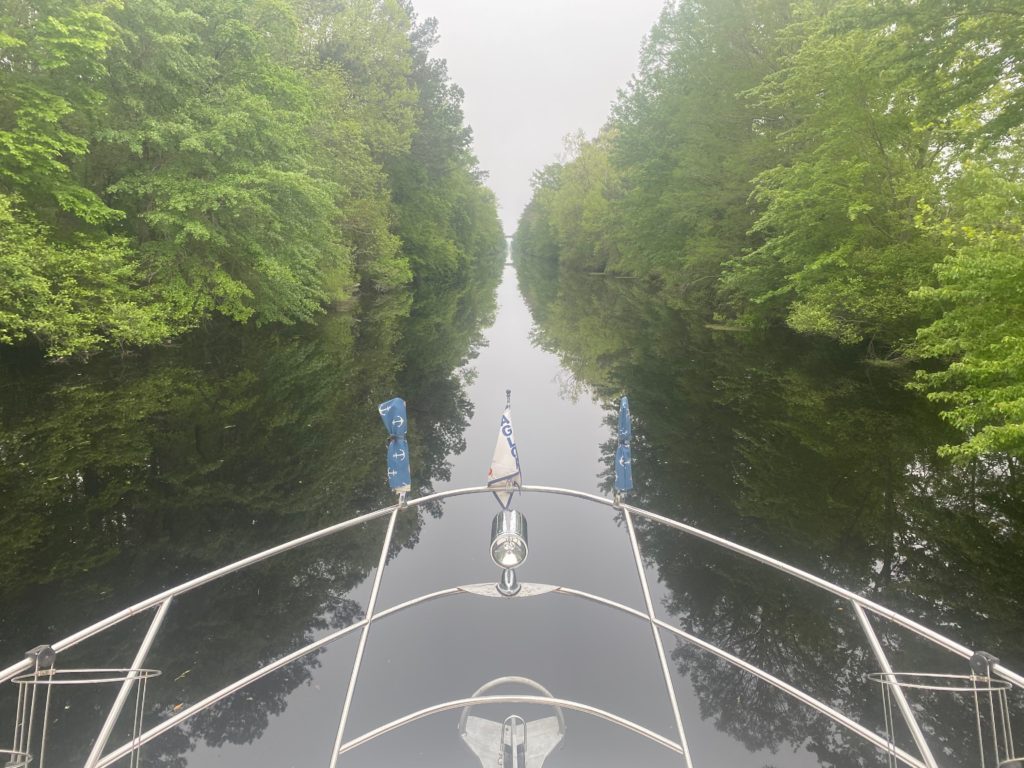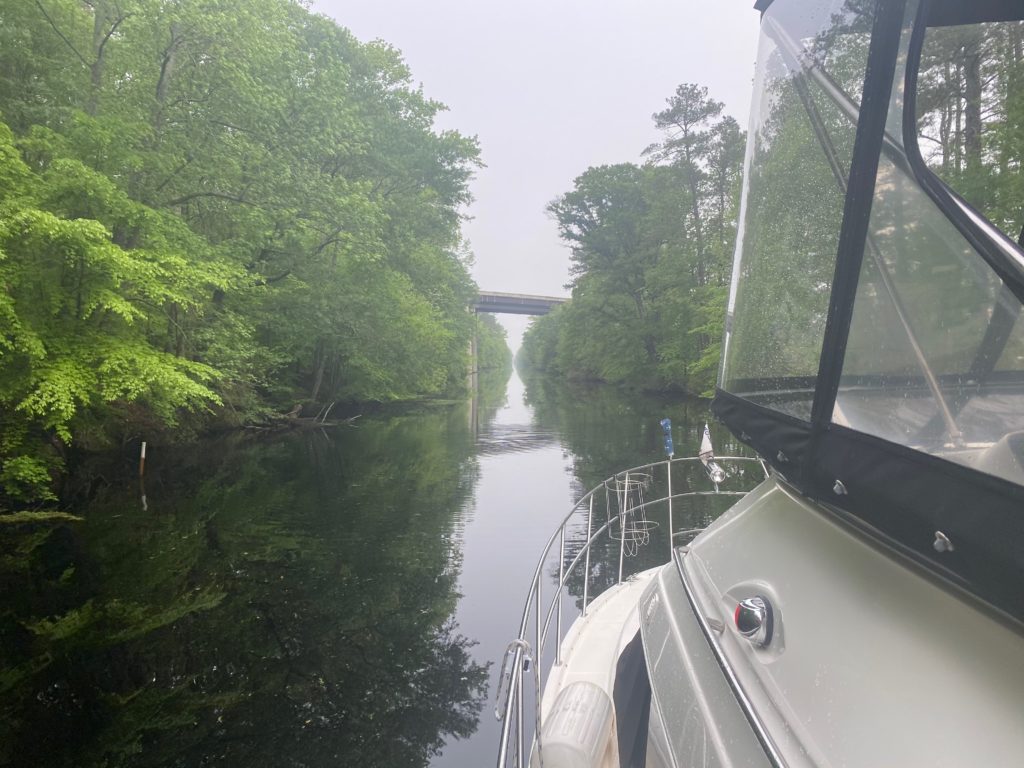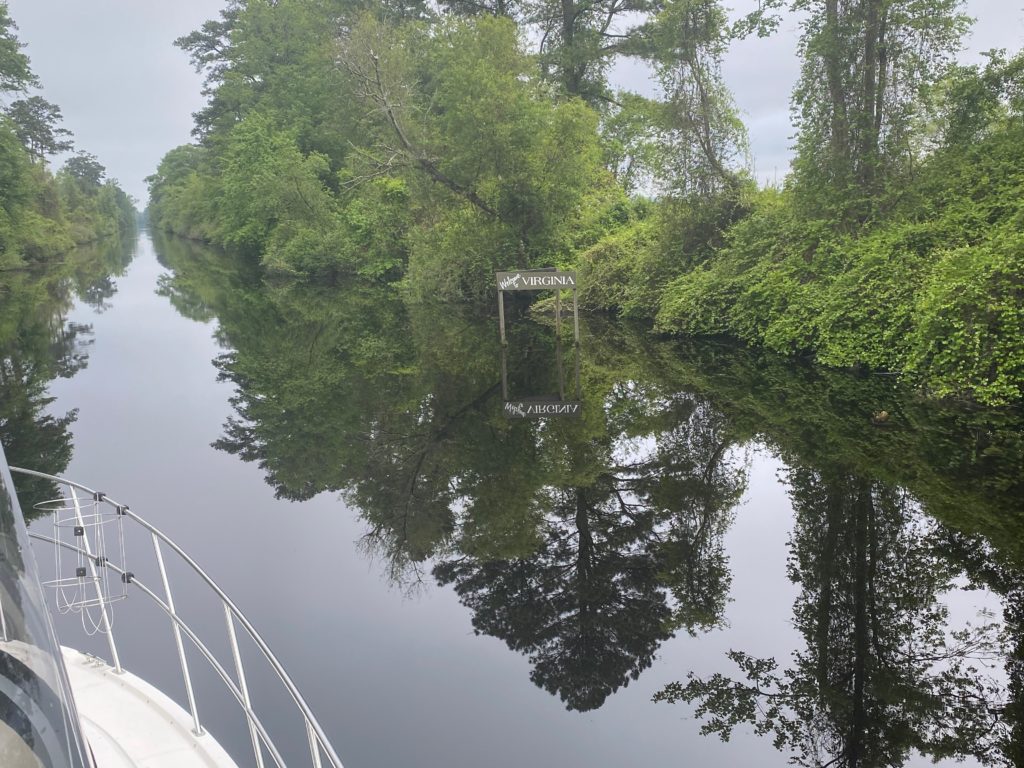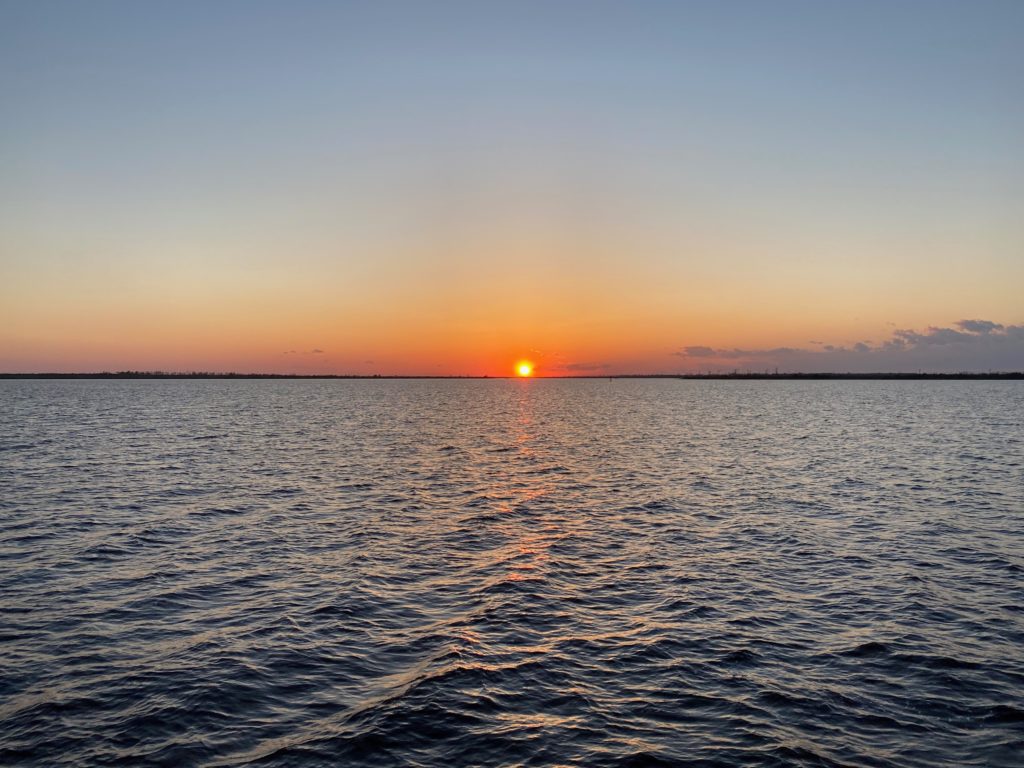
We departed Belhaven with a plan to spend the next few nights on anchor. With my new job, we knew we wanted to do only short hops and our only schedule constraint was to arrive in Norfolk on Sunday to receive a shipment of new house batteries for installation. The route would take us up the Alligator River to Elizabeth City and then through the Great Dismal Swamp. After the windy night talked about in the last post calmed down, the rest of the evening was uneventful. We knew that we were in for a couple of days of sporadic high winds, so we decided to head north after one night to the northern part of the river and found a moderately sheltered anchorage near the mouth of the Little Alligator River.
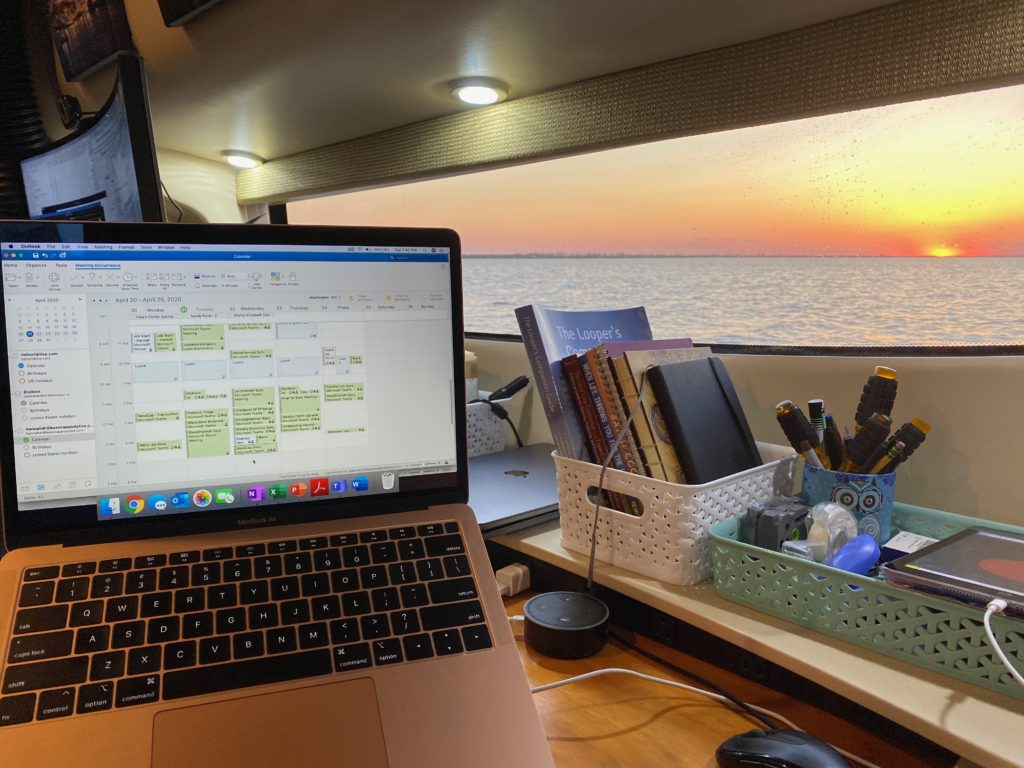
With being in no rush to get to Elizabeth City, and not many options for further shelter from the wind, we decided to stay for several nights in this spot. Since at both anchorages we were the only boat in sight, we run the generator periodically throughout the day to top off the batteries (most of the power draw going to David’s laptops/desktop and enormous monitor :)). On Friday night, the generator suddenly cut out after being on for only 15 minutes. An attempt to re-start indicated a low water flow error. David started his investigation with the sea-strainers, which filter out weeds and other detritus from the seawater pulled in to cool the system. This is something we should probably check regularly, but actually hadn’t. After cleaning out the muck and trying to start it again, but with no luck, David pulled open the generator and discovered the impeller (a regular wear item) was completely worn down. You can see in the pics below, it’s a round “cog” that is supposed to have lots of arms – ours had only 1.5! We got that replaced with the spare and everything worked again!
Our travails that night were still not over! Later that evening, while sitting around the salon, suddenly both anchor alarms went off at the same time. After holding fast in one point for the previous 2 days, an hour prior to this, the wind had picked up and pushed us 180 degrees around our anchor (pretty standard), and we’d stopped moving for an hour or so. That was fine, but then all of a sudden the anchor must have gotten pulled up and we rapidly moved another 120 feet or so toward the shallows (we only started in 7 ft of water, so …) We only had another 200 ft or so to go before we were in bad shape, so we were just about to turn the boat back on to take manual control of our direction when we stopped in place again — the anchor found a new hold. We decided that we’d rather have more room for error through another night of heavy wind and decided we needed to pull up and re-set.
Armed with microphone and headlamp, I went out the the front of the boat and started pulling up the anchor. We were being tossed about from side to side, so it took quite a while to keep re-adjusting the boat’s nose so that the anchor pulled from straight ahead instead of raking out to the side of the bow sprit. Once we finally lifted the anchor, the boat promptly shot off towards the shallows. With some strong revving of the engines and some excellent boat maneuvering, we repositioned and dropped the anchor again close to our original spot. We reset the bridle and hunkered down for another rolling night – at this point our 3rd in a row, and stayed fast in that spot for the rest of the night.
For the next leg of the Great Loop, there are two options – an inland waterway through the Great Dismal Swamp, or around the outside through Coinjock and then the Chesapeake Canal. Both routes join together on the south end of Norfolk, VA. The swamp canal is maintained to 6 ft depth by the Army Corps of Engineers and according to our pre-reading was a very pretty route. After calling to confirm it was open and being told that it was sitting just above 6ft for depths at the moment, we decided on taking this route.
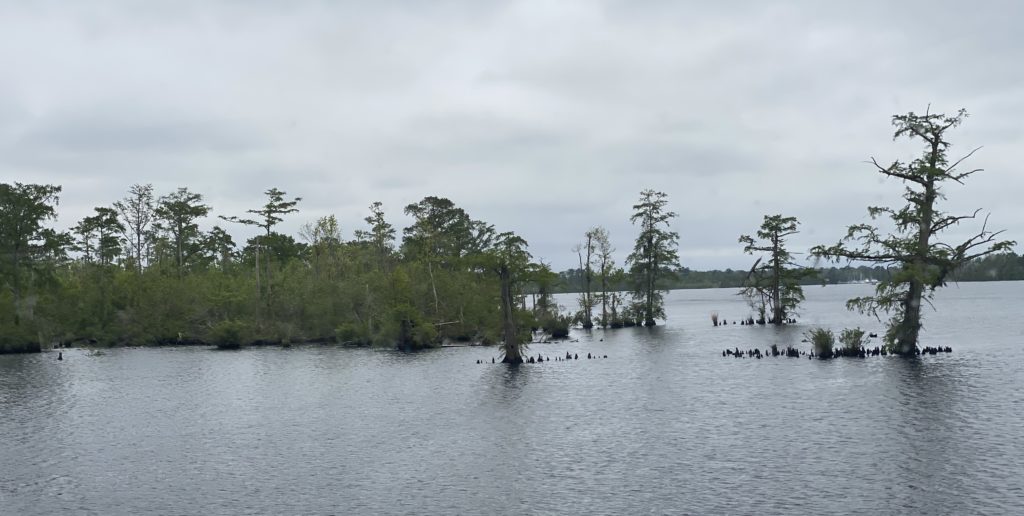
On Saturday we pulled up anchor again and headed to a spot north of Elizabeth City, basically as close to the entrance to the Great Dismal Swamp Canal as we could get. The locks at each end only open at 8:30AM, 11AM, 1:30PM, and 3:30PM, so you have to time how you wanna do things. It’s 19nm from lock to lock, with a speed limit of 6kts, so your best case scenario is a hair over 3 hours. With the whole thing being 6ft-ish deep, there was a pretty significant risk of at least minor propeller damage, so we decided to give ourselves lots of room for possible disaster and just make the 8:30AM south opening. That plan gives us plenty of buffer to get to the 1:30PM exit and make our way out through Norfolk.
We woke up early (6:30) the next day as we had to pull anchor and move the 10 miles to the entrance lock. We made it with plenty of time to spare, and found a fishing trawler had anchored the night there, with his anchor limply hanging from the front near the middle of the channel, and his butt firmly resting in the weeds to port. As we arrived, they figured it was time to wake up and started pulling anchor. For 30 minutes or so, we sat in was what was fortunately completely still and wind-less 6ft deep water waiting for the lock to open, with paint-mixing sticks poking out of the water not very many feet to the left and right of us, spray painted faded green and red, letting us know the extent of the “channel”. At the appointed hour, the lock opened and we entered the canal without incident.
As we were in the lock, the operator told us that they had been getting reports of boats hitting submerged obstacles along the first few miles of the canal. Great…but we’re committed now! The route was speed controlled, straight, pretty but boring, and hovered around 6.2 ft deep the entire way. We lightly touched something on the bottom about every mile or so (*thunk*), immediately threw the shifters into neutral to make the props stop spinning before the solid object made it to the back of the boat, waited several seconds for inertia to take us past whatever it was we hit, and then put things back in forward and continued. Despite all the clunks, we somehow managed to not pick up any vibration indicating propeller damage.
The north lock waiting wall happened to be right next to a decent shopping center, so we made tied up and ran off for a big grocery run while we waited for the 1:30PM opening, restocking the pantry for more time on anchor. The highlight of the day was the north lock operator, who shared historical details about the canal, and treated us with a conch-shell concert while the water level slowly dropped.
We finally exited the swamp and proceeded through Norfolk, which was a surprisingly endless collection of enormous dockyards and drydocks working on building/refurbishing gigantic ships, container ships being loaded and unloaded, and endless navy ships, for miles and miles. After 11 hours of cruising, we finally exited the Norfolk channel, popped across the bay, and put down our anchor on a huge area of 10ft deep flats just outside of Hampton. We opened some drinks and vegged out, pretty exhausted. We were super excited about starting a week of work after this weekend.
Ultimately, we decided that we’d do the outside route, if we were going to do this again. The Dismal Swamp was pretty, and neat, and locks are fun, but spending 3 hours with no music playing so you can listen for thunks, and endlessly worrying if you’re about to destroy your running gear, isn’t quite worth it. If they’d put another foot or two of water in there, it’d be a lot more exciting of a proposition to redo.

